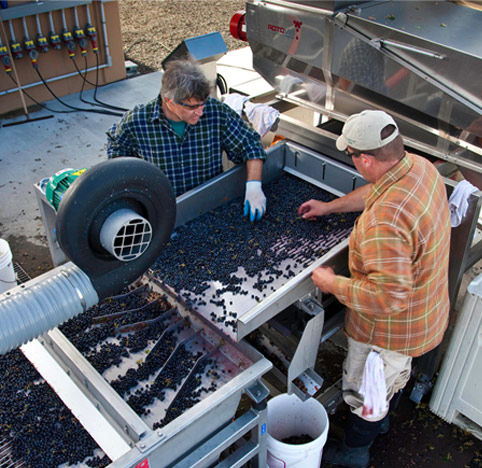

Chapter 1
SEPTEMBER 10, 2009
Consumers and critics agree: Northstar Winery in Walla Walla makes great Merlot. So, how do you make a great wine even better?
Northstar winemaker David “Merf” Merfeld set his sights sky high for “The Big Dipper Project”, the winery’s inaugural effort to make Washington State’s best Merlot starting with the 2009 vintage.
An ambitious goal, yes, but Merf has been working toward creating this ultra-premium, limited production wine almost since they day he stepped into the top spot at Northstar in 2007.
After the seed was first planted for The Big Dipper (the wine’s whimsical working title), Merf and his winemaking team began talking about pushing the envelope to create a wine that would show the world the full potential of the state’s Merlot.
“We started by tasting Merlots from all over the world, taking note of the characteristics each region added to the wine and talking about what worked and what didn’t,” Merf said.
The tasting team especially admired the style from the Right Bank Bordeaux producers, elegant wines that are known for their ability to improve with age.
“We want to make a highly extracted wine that will stand the test of time in a collector’s cellar,” Merf said.
But we’re getting ahead of ourselves. As all seasoned vintners know, great wines are made in the vineyards, and Merf has some spectacular sites from which to source his fruit.
In late June, shortly before he climbed Mt. Rainier, the wiry winemaker put some 300 miles on his truck in one day, touring blocks at several potential sites that should make The Big Dipper an astronomical success.
He loves the beauty of Beverly Vineyard, just north of the Wahluke Slope and Saddle Mountain, its gentle slope and sandy soil making a fine foundation for producing intensely flavored fruit.
Merf explained how the Missoula Floods deposited rich, sandy soils during that last ice age, one of the reasons the region has become renowned for its fruit. (He’s a big fan of the Nova special on PBS called “Mystery of the Megaflood” that helps explain this earth-altering event that happened 12,000 years ago.)
So far, the growing season in the state has been textbook perfect. By late June, following bud break, pollination and set, the berries were already pea-size at Beverly, a bit farther along than the fruit in Walla Walla.
Before heading home, Merf checked on some of his favorite blocks at Shaw Vineyard on Red Mountain and at one of the state’s oldest sites, Cold Creek, which was planted in 1973.
“Just take a look at the size of the vines here,” Merf said, pointing out knarled trunks the size of small trees. He drove very slowly past rows and rows of vines, careful not to kick up dust on the leaves. “Some very famous wines have come out of here.”
Even at the early stages of the growing cycle, Merf starts getting excited about harvest. “It’s my favorite time of year,” he said. Merlot should be ready in mid-September. Then, Merf will consult with the viticulture team to identify the very best of the best grapes from the finest blocks. And then The Big Dipper will really start to shine.
